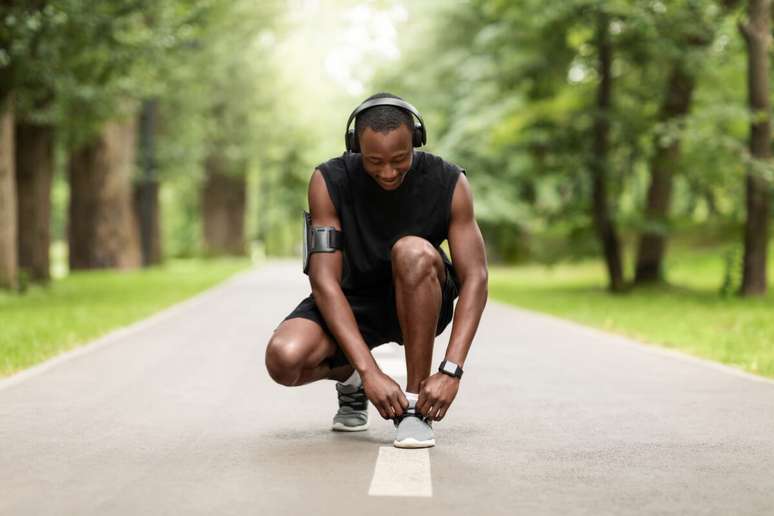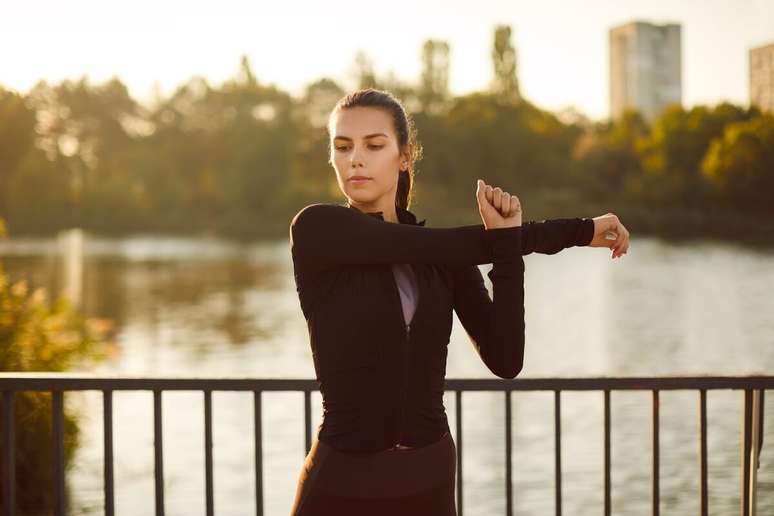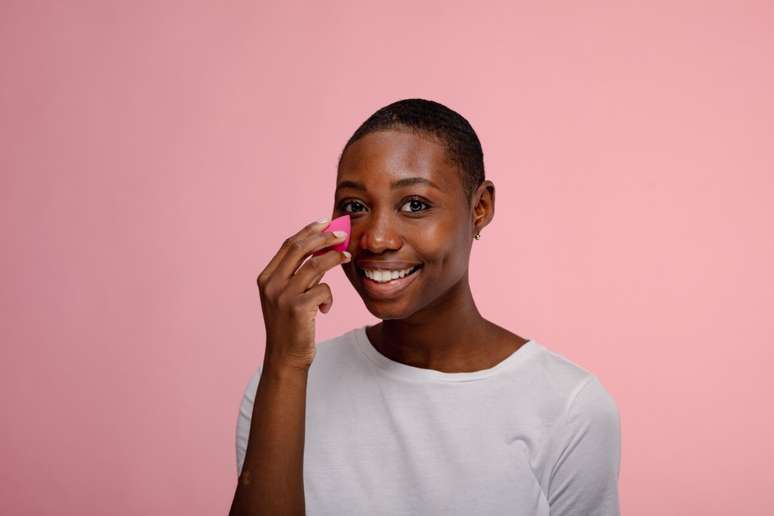Find out how some habits are important to avoid health problems
The practice of physical activity has become increasingly common in the routine of Brazilians, as evidenced by increasingly crowded gyms, parks and streets. According to the “Vigitel 2006-2023 Practice of physical activity” survey, released by the Ministry of Health (MS), from 2009 to 2023 the number of people aged 18 or over who practice physical activity in their free time increased by 30, 3% to 40.6%.
This fact can be explained by the benefits provided by physical exercise, such as disease prevention and increased longevity. “Among other benefits, the practice of physical exercise improves circulation and venous return, contributes to burning fat and developing muscles and strengthens the immune system”, explains Dr. Aline Lamaita, vascular surgeon, member of the Brazilian Society of Angiology and Vascular Surgery.
However, before you go into athlete mode and start training, it’s important to take some precautions to prevent problems and even improve your performance. See below!
1. Seek professional guidance
Before you start practicing any kind of physical activityIt is important to seek out a qualified professional, such as physical educators, to guide you on how to perform physical exercises correctly.
“Practicing physical activity without due professional supervision can lead to overloads, excessive repetitions and incorrect execution of exercises, which are among the main causes of knee injuries, for example”, says Dr. Marcos Cortelazo, orthopedist specializing in knee traumatology and of sport, member of the Brazilian Society of Orthopedics and Traumatology (SBOT).
The doctor adds that, if you already feel pain, it is also important to consult an orthopedist to undergo an evaluation and check what type of exercises you are able to practice.
2. Pay attention to your diet
Inadequate nutrition before training can cause symptoms such as dizziness, nausea and other digestive disorders. «The ideal is to follow a light diet, with foods that are difficult to digest, such as yogurt with muesli, banana with oats, wholemeal sandwiches with peanut butter and sugar-free jelly or red beetroot, orange, apple and chia juice. These are excellent pre-workout options that are light, easy and slow to digest thanks to the presence of fibre”, explains nutritionist Dr. Marcella Garcez, director and professor of the Brazilian Association of Nutrology (ABRAN).
After training it is also important to pay attention to your diet to replenish your energy. “After training, it is recommended to consume an adequate meal to replenish the needs of carbohydrates, proteins, fats and water based on the intensity of the activity,” he adds.
3. Start slowly
Excessive exercise can also cause symptoms such as dizziness and headaches, as well as favoring the appearance of lesions. For example, a sedentary person who does very intense exercises in the gym may end up feeling sick, since their body is not prepared for that type of activity. “Therefore, the ideal is that physical activity is introduced slowly and progressively,” emphasizes Dr. Aline Lamaita.
4. Wear appropriate clothing
The friction between sweaty skin and clothing can promote the appearance of acne-like breakouts, such as blackheads, whiteheads and folliculitis, a problem popularly known as acne mechanica. “Fabrics such as wool, elastane and nylon, widely used in cold-weather clothing, and polyester, common in sportswear, are among the main culprits,” says dermatologist Dr. Claudia Marçal, a member of the Brazilian Society of Dermatology .
According to the doctor, this happens because these fabrics cause greater friction with the skin and prevent it from breathing, causing overheating and sweat retention. To avoid this, Dr. Claudia Marçal recommends avoiding wearing very tight trousers and clothing made from fabrics that retain sweat.
“To avoid the appearance of these acne-like eruptions, always choose cotton clothing. Furthermore, after physical activity, remove sweaty clothing as soon as possible, to allow the skin to breathe properly and prevent clogged pores and the appearance of folliculitis” , he recommends.

5. Choose the correct footwear
THE type of sneakers What you use during exercise is also important. “Shoes must offer stability, have an appropriate size for your foot and, of course, be comfortable. Furthermore, the sneakers you choose must be suitable for your type of stride and the physical activity you will practice,” explains Dr. Marcos Cortelazo.
Depending on your doctor, footwear may vary depending on physical activity. “Those who walk or run, for example, should opt for specific sneakers that have a good cushioning system to reduce the impact of contact with the ground on the joints,” he explains. In the case of leg training in squats, for example, sneakers must have a straight sole. The expert underlines that, in case of doubts about the ideal shoe, the best solution is to ask an orthopedist for advice.
6. Check the possibility of using compression stockings
Compression stockings can be excellent allies for those who practice physical activity. “The advantages deriving from the use of elastic sports socks are many. For example, the accessory keeps the muscles warm, supports the muscles, reducing muscle vibrations, improves venous return and reduces the concentration of lactic and pyruvic acid in the muscles” , says Dr. Aline Lamaita.
According to her, socks can also help performance in physical activity. “All this translates into a reduction in muscle fatigue and a reduction in the incidence of cramps and pain in the calves, as well as reducing recovery times after physical activity. Furthermore, the sock also improves proprioception and muscle alignment In this way, you have an improvement in performance during sport”, he explains.
But before you start using compression stockings, it’s important to consult a vascular surgeon for specific guidance on the appropriate model and how to use them. “An incorrectly positioned compression stocking or with the wrong compression can suffocate the leg and compromise circulation. It is therefore essential to consult a vascular surgeon,” warns the professional.
7. THEwarming up is essential
Regardless of the exercise, it is essential to do a warm-up session before starting it. “Warming up is essential to prepare the entire body, from joints to organs such as the heart, for the next exercise. Starting exercise with muscles and joints still stiff can lead to injuries,” says Dr. Marcos Cortelazo.
It’s also worth highlighting elongation and warm-up are not synonymous and both should be performed before physical activity, starting with warm-up and then stretching. “Stretching helps to increase the flexibility of the muscles and the range of the joints, which helps, for example, to reduce the load and pressure on the knees and, consequently, the risk of injury.”
8. Invest in strengthening exercises
Anyone who believes that muscle-strengthening exercises are only recommended for high-performance athletes is wrong. It is in fact a practice that should be adopted by anyone, as it is of great help especially in the prevention of knee injuries.
“Because the knee depends on the action of 10 muscles to function: quadriceps femoris (vastus medialis, vastus intermedius, vastus lateralis and rectus femoris), hamstrings (semitendinosus, semimembranosus and biceps femoris), tensor fascia lata and gastrocnemius ( medial gastrocnemius and lateral gastrocnemius), stretching and strengthening these muscles improves the function of the knee joint,” explains Dr. Marcos Cortelazo.
Furthermore, according to the average, strengthening also helps maintain stability during movement and reduces the load on the joint. “Therefore, if the muscles in the region are weak, locomotion is impaired and the joint becomes more susceptible to wear and damage. Therefore, muscle strengthening exercises are essential, after all, the stronger the muscles, the more protected the joints,” he points out.
9. Take care of your skin after training
After practicing any type of physical exercise, it is important to adopt a post-workout skin care routine, since, according to Dr. Claudia Marçal, sweat has a very acidic pH, which can damage the skin tissue, generating dehydrationirritation and even acne due to clogged pores.
“After training, it is essential to cleanse, tone, hydrate and, if you train during the day, protect the skin. In case of more intense activities, which generate more free radicals, it is advisable to also use antioxidant active ingredients when hydrating, to prevent the weakening of the skin’s supporting proteins We can use ingredients such as Vitamin C, Alistin, Arct-Alg, Hyaxel and hyaluronic acid with the aim of hydrating the skin and repairing the tissues”, says the specialist.
10. Pay attention to your body’s signals
If you feel pain, for example, in your knee during physical activity, don’t ignore it! Stop the exercise and pay attention to the evolution of the pain. “Normally, pain that occurs during or after physical activity and disappears spontaneously does not tend to be serious. Generally it is post-exertional pain,” explains Dr. Marcos Cortelazo.
However, according to the doctor, pain that does not resolve spontaneously is a warning sign. “In these cases it is essential not to attempt to continue the practice and to contact an orthopedist as soon as possible to undergo an evaluation and receive the diagnosis and appropriate treatment”, he concludes.
By Pedro Del Claro
Source: Terra
Ben Stock is a lifestyle journalist and author at Gossipify. He writes about topics such as health, wellness, travel, food and home decor. He provides practical advice and inspiration to improve well-being, keeps readers up to date with latest lifestyle news and trends, known for his engaging writing style, in-depth analysis and unique perspectives.








